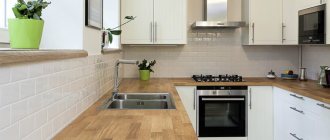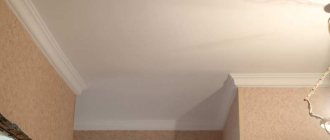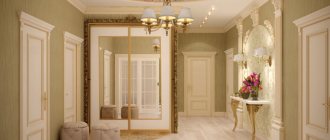An important part of comfort, coziness, and psychological sensations is the height of the ceilings in a private house. There are standards and rules that declare the specified parameter in relation to the purpose of the room. The height of the ceilings is of particular importance when it comes to designing a private house. For apartments, this parameter is strictly regulated - this range is from 2.5 to 2.7 meters.
Ceiling height in the living room
Correct planning further eliminates the issue of installing decorative elements inside the room. When solving a problem, as a rule, they prefer the standard option. The layout of the space in the boiler room requires special attention. It is possible to determine whether the choice was made correctly only after check-in. However, you can pay attention to important details and estimate the positive and negative aspects during design.
Selecting the ceiling height according to the purpose of the room
It is necessary to choose the height of the ceilings at the stage of planning and developing a housing project. There are no specific standards, but when choosing a height, the determining factor is the purpose of a specific room or space.
For example, large ceilings are not suitable for a sauna; the heat will be at the top, and there will also be excessive consumption of fuel materials.
Kitchen in a private house
Increasing the ceiling of a small living space will cause discomfort. Low ceilings are perfect for a children's room, bathroom, kitchen - these rooms do not require large areas. A living room, hall, library or storage room looks good with high ceilings, especially if we are talking about a large home.
Let's consider what is the optimal ceiling height in a private house that will comply with the standards. For a private home, the norm is ceilings with a height of at least 2.7 meters. It gives the room coziness, and carrying out repair work and cleaning such a room does not cause difficulties.
It is also possible to use various design solutions, for example, ceilings made in several levels (stretch, suspended). If you are not attracted to various design designs, you can get by with a height of 2.5 meters.
Near the entrance to a private house
Norms and regulatory documents
There are SNiP (building codes) and SanPiN (sanitary rules) standards, in addition, there are GOST requirements. For residential buildings, the regulated ceiling height is 2.6 meters. When reading the listed rules, you must understand that most of them have lost their relevance; these are not laws, but rules that are advisory in nature.
However, they are still in use among designers who use them in their activities. It is important to note that according to the new construction rules SNiP of 2010, the ceiling height is not regulated at all. It is arbitrarily determined by the customer, but it is necessary to take into account fire safety requirements and the reliability of the structure’s design.
Suspended ceiling of a private house
There is a widespread stereotype among owners of private homes - the larger the ceilings, the better. This is motivated by the opportunity to equip the room using a variety of solutions, which allows you to fully satisfy the needs of the owner.
Requirements for boiler houses using solid and liquid fuels
Such furnaces are subject to special requirements, which do not differ too much from the standards relating to gas equipment. Let's look at the main ones:
- mandatory presence of a door to the street, regardless of the location of the room;
- protection of surfaces from exposure to high temperatures and the risk of fire;
- installation of heating equipment at a distance of at least 10 cm from the walls;
- presence of a window;
- the width of the doorway from the room should be at least 80 cm;
- mandatory arrangement of a fuel storage warehouse, which must be covered, but not heated.
Render House specialists are engaged in the construction of houses with boiler rooms according to standard and individual projects. For more detailed advice, you can contact the phone number indicated in the header of the site.
Geometric parameters of the room
Experts are unanimous in their opinion that ceiling dimensions range from 2.6 to 3 meters. In order to determine a more specific value, it is necessary to understand the layout of the building and indicate its purpose. Cyclic or seasonal operation of the building is possible.
Diagram of a two-story house with high ceilings
When it comes to a summer country house consisting of small rooms, you can stop at a ceiling height of 2.6 meters. Such buildings do not imply the presence of large living rooms and wide halls; high ceilings do not make sense.
However, when we are talking about a house as a permanent home, large bedrooms and spacious living rooms are well suited. This requires high ceilings, especially if you plan to place bunk beds.
Construction from timber
The best interior options for a three-room apartment in Brezhnevka
Having three rooms suggests the greatest flexibility to change. Variability allows you to turn many ideas into reality.
Any work on redevelopment and renovation of an apartment must be entrusted to professionals.
Frequent options and techniques used by interior designers:
Expanding the space of the bath and toilet by installing a corner bath instead of a full-size or shower. Another common solution here would be to remove the partition between the bathroom and the toilet, which will optimize the space and make it not only visually, but actually more. If there is one large room, then it is often zoned, creating additional space. The partition can be conventional or made of a specific material. If there are two small rooms and they are separated by a non-load-bearing wall, then they are often combined, freeing up additional space. Sometimes this is designed in the form of a large arch, in other cases the trace of the wall is completely removed. Using the built-in cabinet in the kitchen as “plus one meter”, because usually this room was quite small. If you demolish the wall between the balcony and the kitchen, the area will then increase by 1.5 times. And in such buildings, the layout usually assumes exactly this position of these premises
It will not be difficult for specialists to study the apartment plan, conduct a detailed analysis, select suitable repair options, and coordinate all redevelopment work with higher authorities.
Rational ceiling height
Any owner, when starting to build a house, wants to determine what ceiling level will be optimal for each of the rooms of his house. This approach seems quite natural, because after the construction of the building is completed, it needs to be inhabited - which involves maintenance and care, so it will not be possible to limit oneself to just enjoying the beauty of the structure. Comfortable ceiling heights are determined from the following principles:
- own wishes;
- taking into account ergonomic rules and regulations;
- standardized building dimensions.
Drawing and section of a private house
Personal wishes regarding which height will be more comfortable are quite diverse, and this issue does not require detailed consideration.
It is necessary to first familiarize yourself with the ergonomic side, at least with the most basic nuances.
In what cases can you not comply with the rules?
The current standards regarding the height of premises can only be ignored during the construction of individual housing. If desired, in such a house you can make walls even more than 3.5 meters long. But a large area requires large expenses.
When trying to save money, a very small ceiling will ruin even the most beautiful mansion. Once construction is completed, it will be almost impossible to fix it.
It is best if you choose a standard height. Then, when using the house, you can avoid unwanted consequences. The rule of the golden mean applies here.
But there are also nuances when the standard size is not always the best. For example, if an intricate, unusual, unique structure is being designed. Or in the case of building a frame house, in the Finnish style, when the ceilings are lowered to 230 centimeters.
Source
Pros and cons of different ceilings
The optimal ceiling height in a private house is an average value. If the task is to build comfortable housing without much sophistication at minimal expense, the most correct solution is to follow standard dimensions. At the same time, the standard dimensions of 2.6 meters easily avoid many disadvantages and make life in the house pleasant for its inhabitants.
A private house
High ceilings
They have their disadvantages:
- Costs during the construction phase of the building will be higher. This also entails increased costs for interior decoration.
- Complex organization of the heating system, the operation of which will require significant funds.
- Increased complexity of repair work. Repairers will be forced to use special structures. This entails an increase in the cost and time of repair work.
- Difficulties that occur in everyday life. A special approach is required when servicing and cleaning the premises. Even replacing a light bulb can cause difficulties.
Pros:
- They contribute to the formation of a specific atmosphere and a feeling of spaciousness.
- Lots of room for imagination when decorating. Such ceilings contribute to the creation of an individual floor design; it is possible to use several levels using various decorative solutions from plasterboard. They are perfect for the Baroque style, which involves the presence of a variety of stucco moldings, as well as for the classics.
Standard project
Experts recommend decorating a space with high ceilings following the “rule of three” - the walls are divided into three sections. The lower level is intended for auxiliary decoration, the middle level is occupied by shelves and paintings.
Optimal value
Applied calculations for selecting foundation parameters are based on the bearing capacity of the soil and the total pressure of the structure on the site. To ensure optimal conditions for the durability of the structure, engineers select the required width and depth of the tape.
From the type of construction
Materials that are suitable for load-bearing walls in a house differ in their structure and are differently susceptible to moisture. Therefore, the distance from the zero mark to the floor level will reasonably depend on the main building material from which the structure will be erected.
The relationship between design parameters is shown in the table:
| Type of structure | Recommended plinth height, m |
| Brick and monolithic houses | 0,3–0,4 |
| Buildings made of foam blocks and large-sized ceramic materials | 0,4–0,5 |
| Frame, wooden structures | More than 0.5 |
Wood is most susceptible to rotting under the influence of high humidity, so for this type of construction it is prudent to choose the maximum possible height of the base. The costs of constructing such a foundation are compensated by the absence of the need to carry out major repairs of the structure due to rotting and destruction of the house.
Depending on the number of floors and the total load of the structure
To determine the dimensions of the foundation, engineers need to analyze the type of soil, groundwater levels and the load of the structure.
For example, when designing a garage, bathhouse or frame house, you need to lay a foundation 0.6–0.8 m high. Of this, 0.4–0.5 m of tape will go deep, and the rest will protrude above the ground, acting as a base.
According to English technology, the height of the tape should be less than or equal to its depth. But in practice, this can lead to unnecessary overexpenditure of resources. To achieve this, in Russia builders adhere to the rule that the height of the base should be no more than four times the width of the base.
For a shallow foundation, the following tape widths are accepted:
- lightweight outbuildings - from 0.25 to 0.4 m;
- one-story houses - from 0.3 to 0.65 m;
- two-story buildings - from 0.65 to 0.9 m.
The value of the parameter is from 0.2 to 0.9 meters - the permissible dimensions of the basement for houses for which it is not planned to build a basement. If a structure with a ground floor or basement is being built, then the part of the foundation protruding above the ground can reach 2 m.
Features of the boiler room space of a private house
The regulatory framework for a boiler room in a private house is regulated by the following documents:
- until 2003, the rules according to SNiP 04.08-87* were in force;
- from mid-2003 - rules according to SNiP 42-01-2002.
The documents contain rules for installing a boiler room in a private house.
Boiler options
You need to study the rules, but a special organization must design a boiler room for a private home. The owner has the opportunity to choose the installation of one or another boiler, and can estimate the amount of work to adjust the selected room to the established rules.
If any controversial issues arise, you must contact the gas supply organization. There are many nuances when designing a boiler room in a private house. Problems that arise can only be resolved in relation to the construction plan. The choice of installation location for a gas boiler in a boiler room is determined based on its power.
Utility room
A little about the history of the issue
The design of houses of various heights is dictated by the need to save space, which arises in conditions of total urbanization.
Sample plan for a 9-story building
The expansion of large cities and megalopolises in width leads to the seizure of areas that could serve as agricultural land. Therefore, there was an urgent need for the design and construction of multi-storey buildings. Here are some examples:
- the first 4-story frame-panel house in the Soviet state was built in Moscow in the post-war period (1948);
- at the same time and a little later in Moscow, a residential area was built up with houses of 10 floors;
- the first frameless panel house, 7 floors high, was built in 1954, also in the capital;
- the construction of 5-story buildings was chosen for reasons of economy - this is the maximum number of storeys that allows construction without an elevator;
- For the first time, the construction of a 9-story panel house began in 1960.
Without an agreed project with all parameters, it is impossible to start construction
You can determine with accuracy how tall a 9-story building is using a standard code that was used to designate standard projects in the USSR. The index indicated the type of building and wall material (panels, load-bearing frame, blocks, bricks, etc.), series number and serial number of the project. Sometimes there are two more numbers, 1 or 2, indicating the period when it was adjusted.
By looking up the documents for the series, you can accurately calculate the height of a 9-story building in meters in a particular design of a typical type of building. The designation also included data on the expected climatic conditions (seismic, permafrost, subsidence, etc.), as well as the degree of durability of the 9-story building, which the creators of the project expected (the number 1 meant up to one hundred).
Viewing the plan requires knowledge of numerical and letter designations according to GOST
Design
The choice of standard-height ceilings opens up prospects for varied and inexpensive designs: from banal wallpaper (it is better to prefer wallpaper with stripes, as they make the appearance more sophisticated) to intricate designer patterns that can add interesting ideas to the interior of the room. Using a small ladder, you can independently reach the highest sections of the walls and decorate them.
A room with a standard ceiling height can be compared to a standard sheet of paper, so familiar to creativity. There are, of course, both large and small formats, but it is the standard one that is so familiar and convenient for creating something of your own.
Standard
Modern construction applies various standards in the process of designing the interior space of a building. The standard ceiling height in a private house is 2.7 m. This is quite enough to fully clean and repair the premises.
The minimum distance from floor to ceiling should not be less than 2.5 m. This value of the indicator is more often used in country houses where the owners stay temporarily. For a dacha or cottage, where it is not expected to use various sophisticated design techniques when arranging the interior, this will also be quite sufficient. If you plan to simply paint the ceiling, a height of 2.5 is more than convenient for a country summer house.











